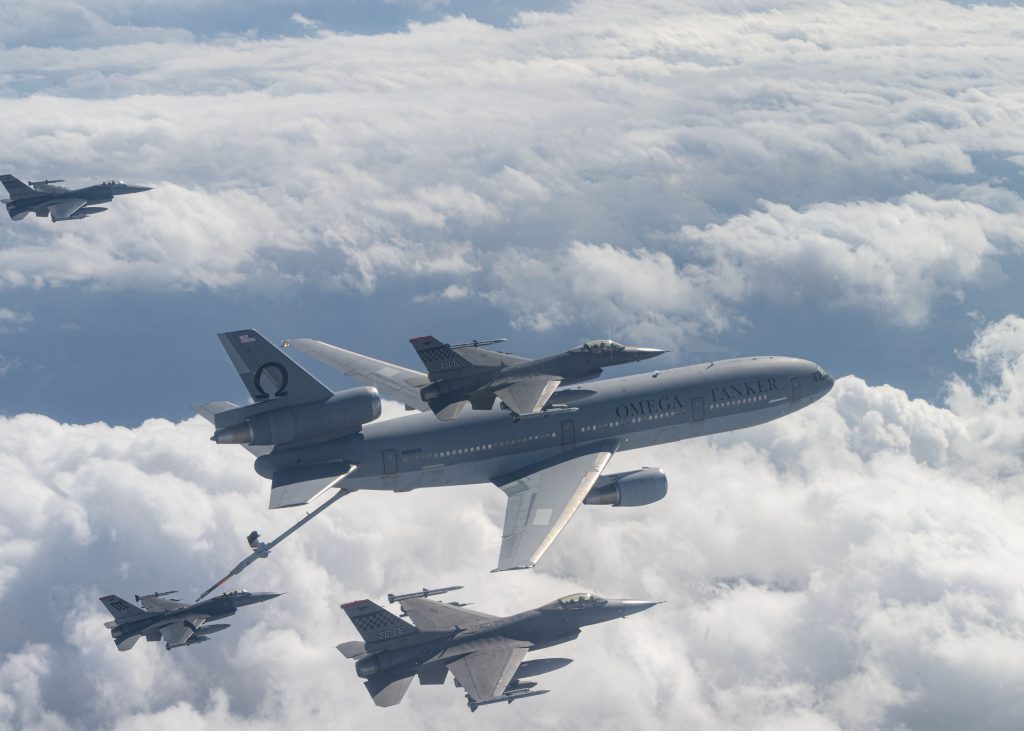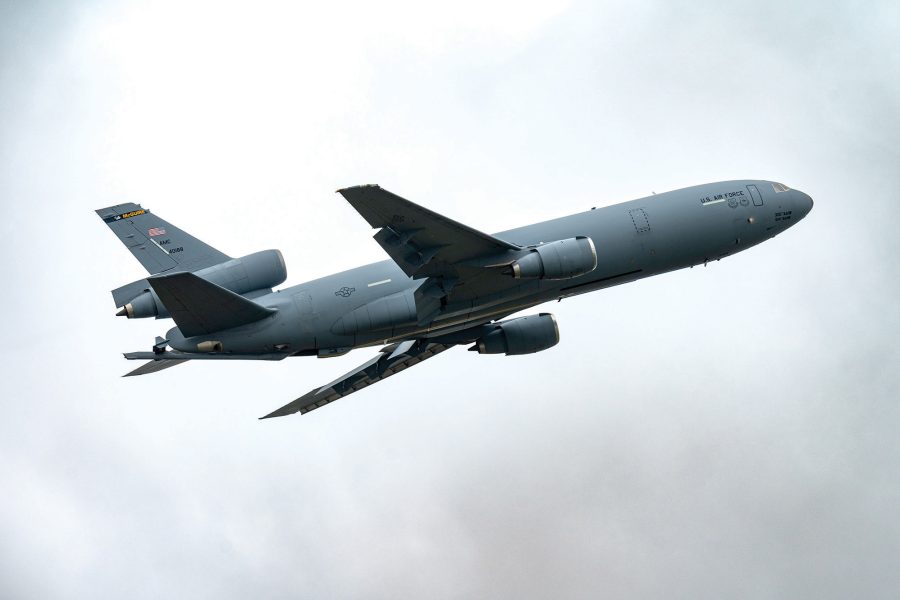Air Mobility Command has explored the idea of commercial refueling to supplement its tankers and is working on more analysis—including potential use of retired and stored KC-10 Extenders—commander Gen. Mike Minihan told lawmakers July 23.
Testifying at his last House Armed Services Committee hearing before retirement, Minihan was asked by Rep. Mark Alford (R-Mo.) about commercial refueling, with Alford arguing the Air Force should embrace the concept. Minihan agreed that there is “value” to the arrangement and said AMC is coordinating with U.S. Transportation, having done the “initial first work” on the idea.
Alford noted that many KC-10s are now retiring to the “boneyard” at Davis-Monthan Air Force Base, Ariz., and could supplement the Air Force’s tanker fleet as commercial tankers.
“Yes, sir,” Minihan agreed. “There’s enormous value in aircraft that have the potential to provide readiness in the commercial sector.”
“The important first work has been done,” he added of AMC’s commercial refueling efforts. “The analysis on the oversight and the certification is what’s next, and we now have enough data to do that.”
Yet Minihan also cautioned that it will be important to “make sure that with commercial refueling, that we don’t decrement the readiness of those in uniform flying the tankers.”
Air Mobility Command was not immediately able to clarify Minihan’s last remark, but it may have been a reference to the number of operational air refuelings aircrews do, and whether handing some of those events off to a commercial provider would reduce training sorties and experience levels among uniformed operators.
“Those three bins of analysis are what need to be initiated and are being initiated,” Minihan said. “And then I think we’ll be able to get to a point where we can make a holistic approach to commercial air refueling.”
There are two commercial aerial refueling companies—Omega Air and Metrea—now serving the U.S. military and other customers. They can refuel aircraft conducting training or in exercises but cannot refuel them in combat. Metrea recently acquired retired KC-135 tankers from Singapore and France and performed the first commercial air refueling of an Air Force aircraft—an RC-135—just a year ago. Omega Air followed with more in December. Commercial air refueling services have been operating for nearly three decades.

The Air Force’s retirement of the KC-10, reaching its final stages, was driven by budget pressures to reduce the number of logistical tails it maintains and not because of dissatisfaction with that tanker’s performance. In fact, the KC-10 achieved a mission capable rate in fiscal 2023 of 80.4 percent, and as the service’s largest tanker, it also had a cargo capacity roughly equivalent to that of the C-17.
KC-10s in commercial hands would likely be a welcome addition to the Civil Reserve Air Fleet, which U.S. Transportation Command can call on in a time of national crisis to supplement the organic air mobility inventory. Civil carriers agree to be part of CRAF in exchange for routine contracts to carry cargo and passengers for TRANSCOM. The KC-10s would need no modifications to be able to conduct either commercial air refueling or cargo missions.
An industry official said KC-10s on call for CRAF would be “a Godsend if you need to clean out [a lot of cargo] or [passengers] somewhere in a hurry, like in a NEO [noncombatant evacuation operation],” and help the Air Force with its hub-and-spoke Agile Combat Employment logistics concept.

